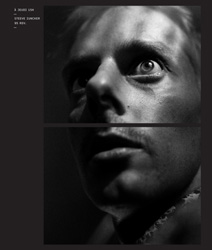Steeve IUNKER


This post is also available in:
 French
French
Pendant deux ans et jusqu’à sa mort, dont ils savaient tous deux qu’elle surviendrait bientôt, Xavier et Steeve se sont retrouvés tous les jeudis, à quinze heures. Xavier a activement pris part à ce travail et les deux hommes se sont photographiés mutuellement, au format 6×6, en noir et blanc et en couleurs. « Je souhaitais ainsi saisir l’évolution de son regard photographique au fil du temps et de nos rendez-vous », explique Steeve Iuncker. Chaque semaine, Xavier sélectionnait ses portraits préférés parmi ceux réalisés lors de la séance précédente et expliquait à Steeve son choix en quelques mots qui sont repris dans le livre.
Xavier est mort un jeudi. Steeve Iuncker interroge de façon inlassable, radicale, politique au vrai sens du terme, la (ou les ) fonction (s) de la photographie et de l’image dans le domaine de l’information et du documentaire d’aujourd’hui.
A quoi cela peut-il servir de valoriser l’image fixe ? Comment se situer par rapport à son histoire, ses histoires ? Quels dispositifs mettre en place, dès la prise de vue et jusqu’à la mise en forme et l’utilisation pour être, sinon justes, du moins pertinents ? Ce sont là les questions de base qui fondent et agitent un travail en permanente évolution, attaché à définir de façon précise ses cadres, sa relation au texte, ses principes (ou absences) de narration, sa mise en danger du regard, du voyeurisme, des conventions.
Steeve Iuncker ne chasse pas les icônes. Il montre. De façon réaliste, libre et salutaire. Il nous demande seulement d’accepter de voir. D’être responsables et lucides.
Christian Caujolle
SEE YOU ON THURSDAY AT 3 « See you on Thursday at 3 » covers two years of photographic portraits of Xavier, a young man with HIV, who the photographer Steeve Iuncker met in 1996. Xavier met with Steeve every Thursday at three o’clock for two years up until his death, which both knew was soon to happen. Xavier was an active participant and they photographed each other, in 6×6 black and white and colour formats. “I wanted to capture the evolution of his photographic eye as our meetings went on”, explained Steeve Iuncker. Every week, Xavier chose his favorite portraits taken during the previous session, explaining his choice to Steeve in a few words that appear in the book. Xavier died on a Thursday.
Steeve Iuncker examines the function(s) of photography, and of images in general, in the area of information and documentary today in a manner which is tireless, radical and political (in the real sense of the term).
What use is there in the promotion of a static image? How to position oneself with respect to its story or stories? What mechanisms need put in place, from the framing of the image to its production and use, in order to get the exact message across, or to be at least relevant?
Those are the fundamental questions which initiate and stimulate a project which is in permanent evolution, trying to define as precisely as possible the image itself, its relation to text, the content (or absence) of description, the risk taken with the viewer, with voyeurism, with fixed conventions.
Steeve Iuncker is not a “chaser of icons”. He shows what he sees. Realistic, free of constraint, worthwhile. He asks only that we accept to see. To be responsible and lucid.
Christian Caujolle


